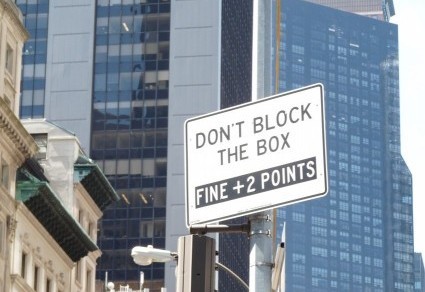No, I’m not talking about politics, though I certainly could find some extremes in that arena if I searched for, say, .00001 seconds. Instead, I’m thinking about the human tendency to take everything to the edges — even when those edges lie in opposite directions. Have you noticed simultaneous cut-downs and expansions? As I walk around the city, I see an increasing number of micro cars that could transport two people and maybe one small bag of groceries. I also see fleets of giant SUVs. You could stack an entire second-grade class in one of those vehicles, assuming you’re not fussy about seatbelts. Here’s a photo encapsulating the trend:

The width of this truck stretches across the entire façade of a good-sized Manhattan high rise. The lettering is large, too. The only problem is that the last letter doesn’t fit — assuming, of course, that this isn’t a mobile ballet studio, but rather a “Crate & Barrel” delivery van.
I also hear the same tendency when shoppers are summoned to the cash register. I wrote in an earlier post (“Following Guest” http://www.grammarianinthecity.com/?p=187 ) about turning customers into “guests,” and now this phrase has accelerated into the extended “Following Shoe Lover” and the contracted “Following” at adjacent stores. I asked the “Following Shoe Lover” employee how she had decided on that phrase, knowing, of course, that she hadn’t decided at all. “They tell us to say that,” she admitted sheepishly. I imagine that many of her customers, like me, don’t love shoes; they simply need them. But announcing “Following Shoe Needer,” however accurate, isn’t fashionable in the post-fact era.
It’s enough to make me nostalgic for the days when clerks bellowed “NEXT!”




















